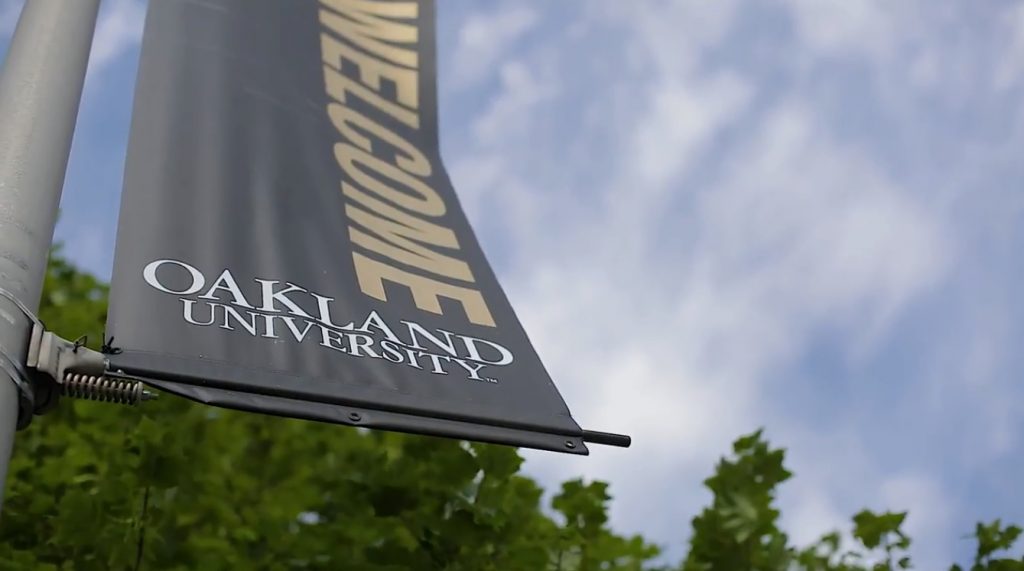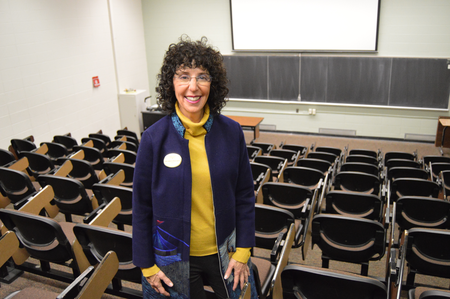Michigan Spends More on Prisons Than Higher Education, And Smaller Schools Are Hurting
Oakland University wants to close the big gap between universities in the amount the state gives them per-student.

There’s a new push to close a wide gap in state funding for universities. Oakland University says no school should get less than $4,500 per student.
As part of the weekly series MichMash, MLive’s Cheyna Roth and WDET’s Jake Neher unpack what increased funding for higher education could mean for the state.
“It is critical that we understand that this is part of our value system.” – Oakland University President Ora Hirsch Pescovitz.
Oakland unveiled the campaign on Feb. 19.
“Instead of considering funding to higher education as an expenditure, we need to recognize that higher education is an investment in our students — an investment that pays dividends as measured by the health of our citizens and the health of our economy,” said Oakland University President Ora Hirsch Pescovitz.
Click on the player above to hear MichMash discuss the initiative and to hear Stephen Henderson’s conversation with Oakland University President Ora Hirsch Pescovitz.
To put this request for $4,500 per student into perspective, Grand Valley currently receives the second lowest amount of per student funding at $3,263 per student. They get $194 more per student than Oakland – the university that receives the least in per student funding.
Five universities in all receive less than the proposed $4,500 per student – GVSU, UM-Flint, UM-Dearborn, Oakland, and Saginaw Valley.
“Higher education is directly correlated with the health of our citizens, and very importantly, the health of our economy and economic prosperity,” said Hirsch Pescovitz.
“And so it is critical that we understand that this is part of our value system, that when we say that we are not investing in higher education, it means that we are making a decision to not care about this important factor.”
The argument for investing more in higher education ranges from increasing the state’s population because more students will come and settle in Michigan if there are desirable universities, to how the state spends its money being representative of its value system.

Hirsch Pescovitz pointed out that the state spends more on its prisons than it does on higher education.
At the top of the funding list of the state’s 15 public universities is Wayne State with $8,999 per student. That’s a difference of $5,736 per student between Wayne and Grand Valley.
Funding Gap
It’s not always necessarily apples to apples. Wayne State has more expensive graduate programs, and there are factors like whether students are full time or part time and how many years they’re taking to finish their degree. Those things factor into to that number and make it a little more complex.
But at the same time, it is a huge gap between that $9,000 per student at Wayne State and around $3,000 per student, at places like Grand Valley and Oakland.
Grand Valley was fourth in 2019 for its fall headcount with a population of 24,033 students. While Wayne State was third with 26,844 students.
The funding for public universities from the state isn’t based on enrollment. Instead, it’s a funding plan developed in the 1970s that when divided by the number of students gives a per student funding amount that’s commonly used.
“For years we have also emphasized the fairness to students that would — and should — come with a more equitable funding model.” – Matt McLogan, Vice President for University Relations at Grand Valley State University.
The number to pay most close attention to is the fact that Michigan’s total budget, 4 percent of it goes to higher education. Most states in the country are more than twice that, and the average in the United States is 10 percent.
Possibly increasing higher education funding is something that lawmakers have been debating for years.
Governor Gretchen Whitmer has called for increased funding at public universities across the board. Her current budget plan calls for 2.5 percent increases for universities and community college budgets. But the schools would have to hold tuition increases below 4.25 percent.
Whitmer’s budget recommendation last fiscal year called for a 3 percent increase, but that was eventually cut by the Legislature until public universities ended up with less than a 1 percent increase overall and a .5 percent increase in university operations.
GVSU has been in the bottom for years and at times the amount of per student funding it receives has gone down. Like for several years after the 2007-2008 budget. It’s now getting only a little more per student than it did in 2007-2008 where state aid was at $3,172 per student.
“Grand Valley fully agrees that higher education is an investment that pays dividends to everyone in Michigan, and we have always been an active voice in urging more funding for higher education,” said Matt McLogan, Vice President for University Relations at Grand Valley State University.
“For years we have also emphasized the fairness to students that would — and should — come with a more equitable funding model.”
But McLogan wouldn’t say if the university is fully on board with Oakland’s campaign just yet. Rather, he said they would like to know more about the plan and strategy as funding discussions begin in the state Legislature.
Support the news you love.
Here at WDET, we maintain our journalistic integrity through independent support from readers like you. Because you value WDET as your source of news, music, and conversation, please make a gift today.

